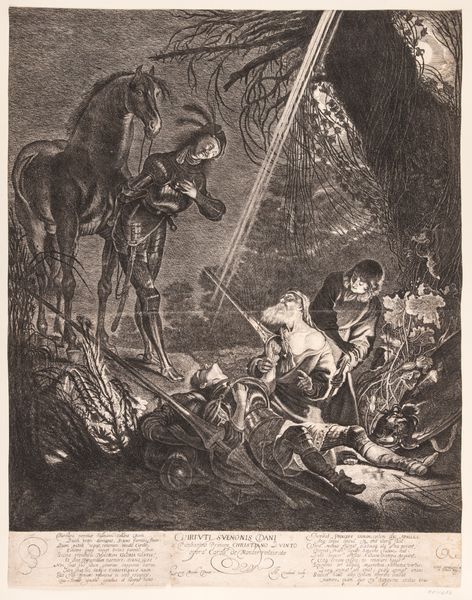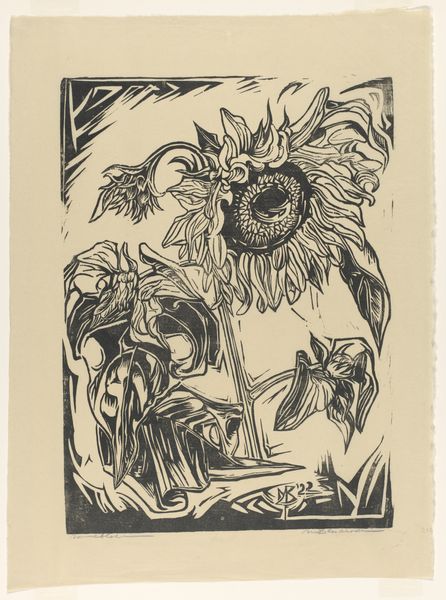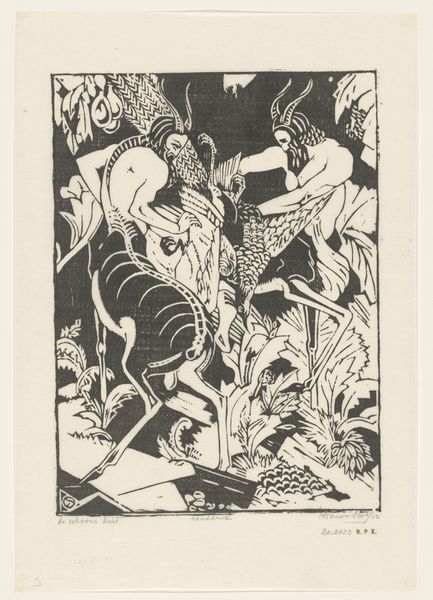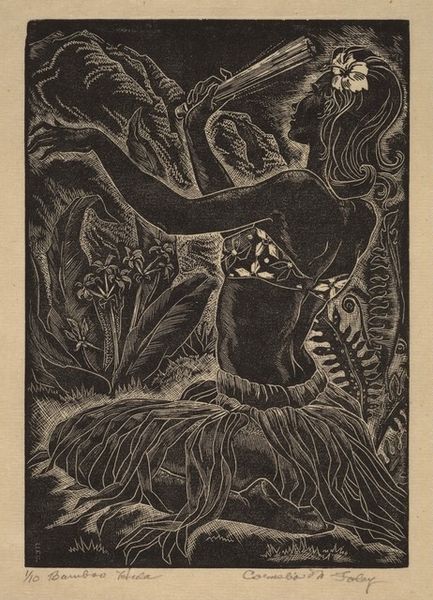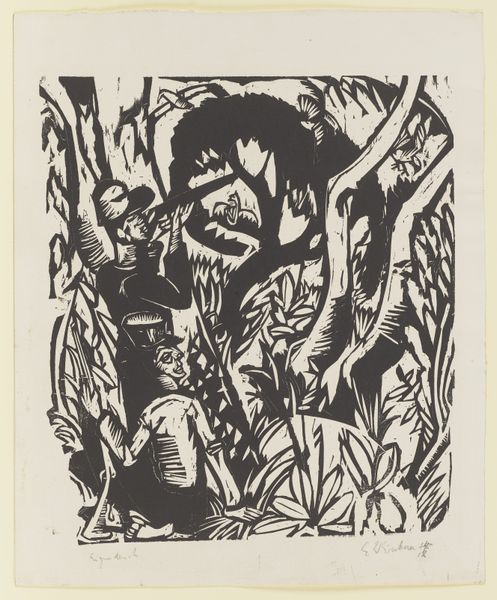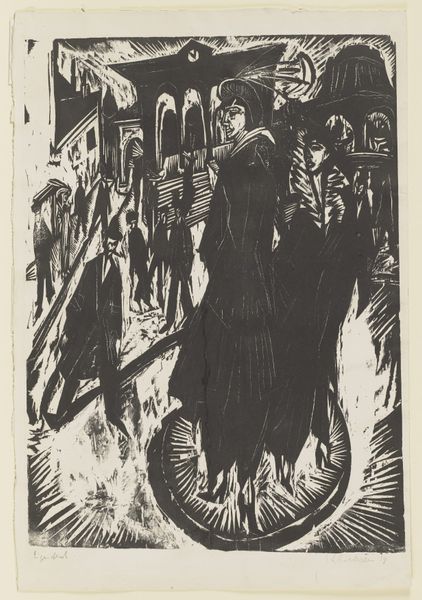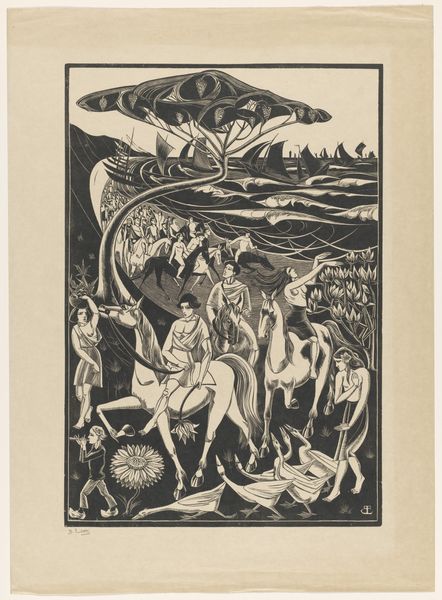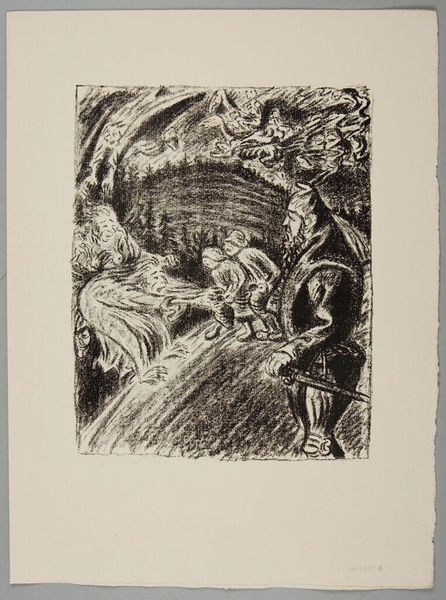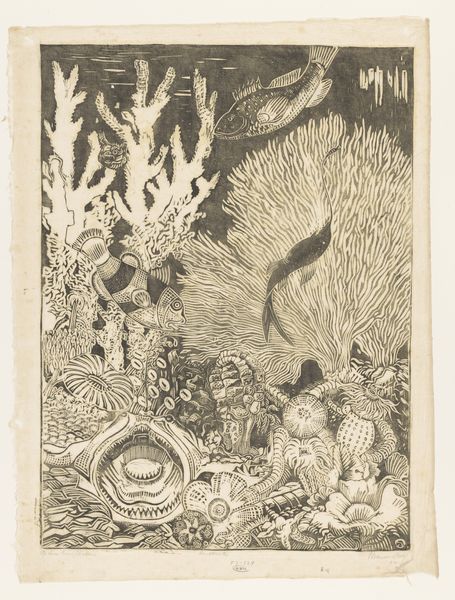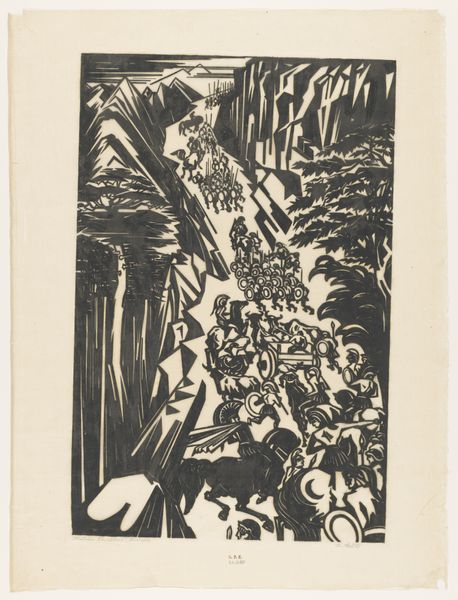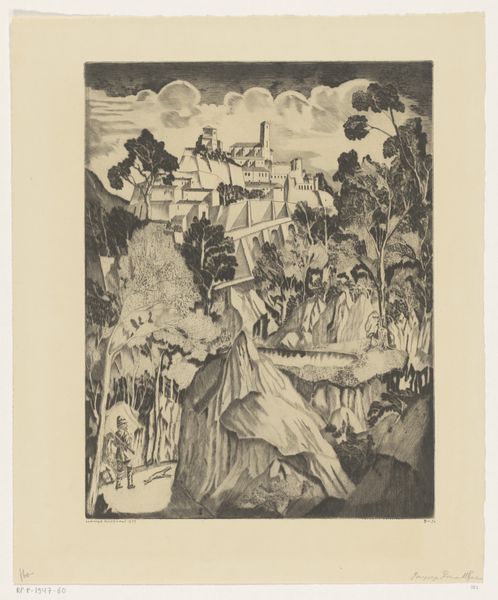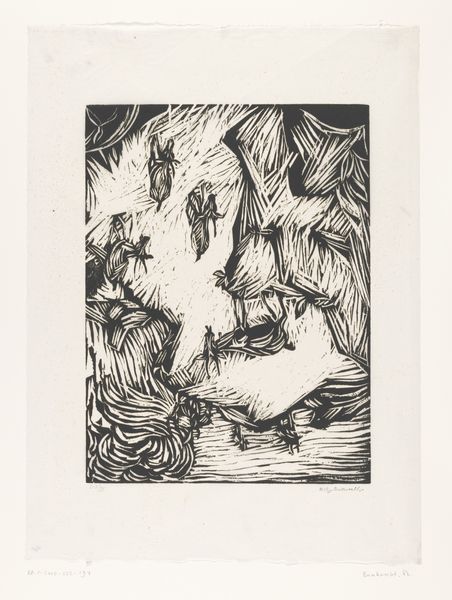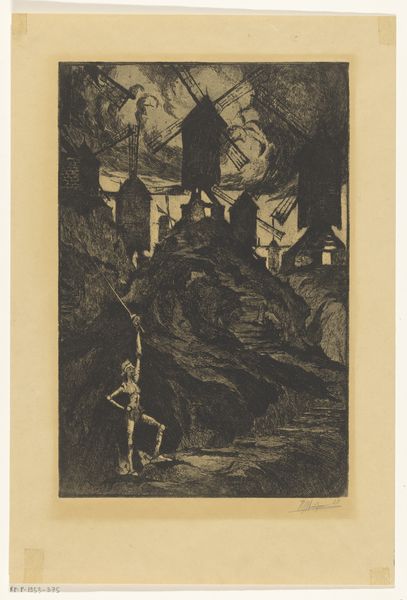
Dimensions: height 74 mm, width 120 mm
Copyright: Rijks Museum: Open Domain
Curator: Agta Meijer's "Kerstkaart van Agta Meijer," created around 1935, is a compelling woodcut that utilizes paper as its ground. It is full of complex visual symbols. Editor: It has a rather dark, almost dreamlike quality. The sharp contrasts inherent in the woodcut technique emphasize this—creating stark black and white spaces. Curator: Yes, the heavy reliance on figuration and symbolism is very interesting. Woodcut was often adopted for political or social purposes due to its easy reproduction. Here it seems put to use in the creation of a kind of devotional object—a Christmas card. The themes present tell the tale of Saint Nicholas. Editor: Woodcut lends itself nicely to the graphic directness we see here. The artist’s hand is extremely evident—I am intrigued by the labor behind carving away the wood. Looking at it, the viewer's focus is drawn to the hands of the praying figure. Curator: The card is a product of its historical period. Religious sentiment was deployed quite heavily in interwar Europe. Editor: True. Also, I see a strong juxtaposition between the earthly, rendered in the bottom half with the kneeling girl, and the spiritual at the top, populated with all manner of Christian symbols like stars and baby Jesus. How were cards like this generally received at this time? I mean, did people consider woodcut appropriate for domestic use or were the techniques still considered too crude for decoration? Curator: It depends, because artists such as Meijer often operated in socially progressive circles where such visual traditions of ‘high art’ versus ‘low craft’ were being openly challenged. Meijer also engages with narrative themes that often get side-lined as mere illustrations rather than capital “A” art. This card walks the line and uses a folk craft style to challenge artistic norms. Editor: I think you've put your finger on something that is both challenging and captivating about the work: its defiance of simple categorization and hierarchies through a conscious interplay between production methods, symbolic content, and a devotional sensibility. It also hints to the role women had in defining social standards in the era, through the labor-intensive medium that is often ignored. Curator: Precisely. It’s a subtle reminder that even seemingly simple images carry layers of cultural meaning and the echoes of the artist's world.
Comments
No comments
Be the first to comment and join the conversation on the ultimate creative platform.
